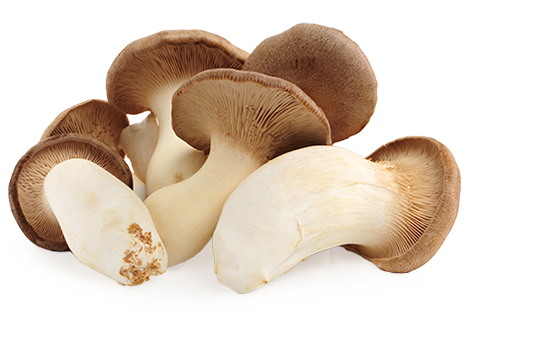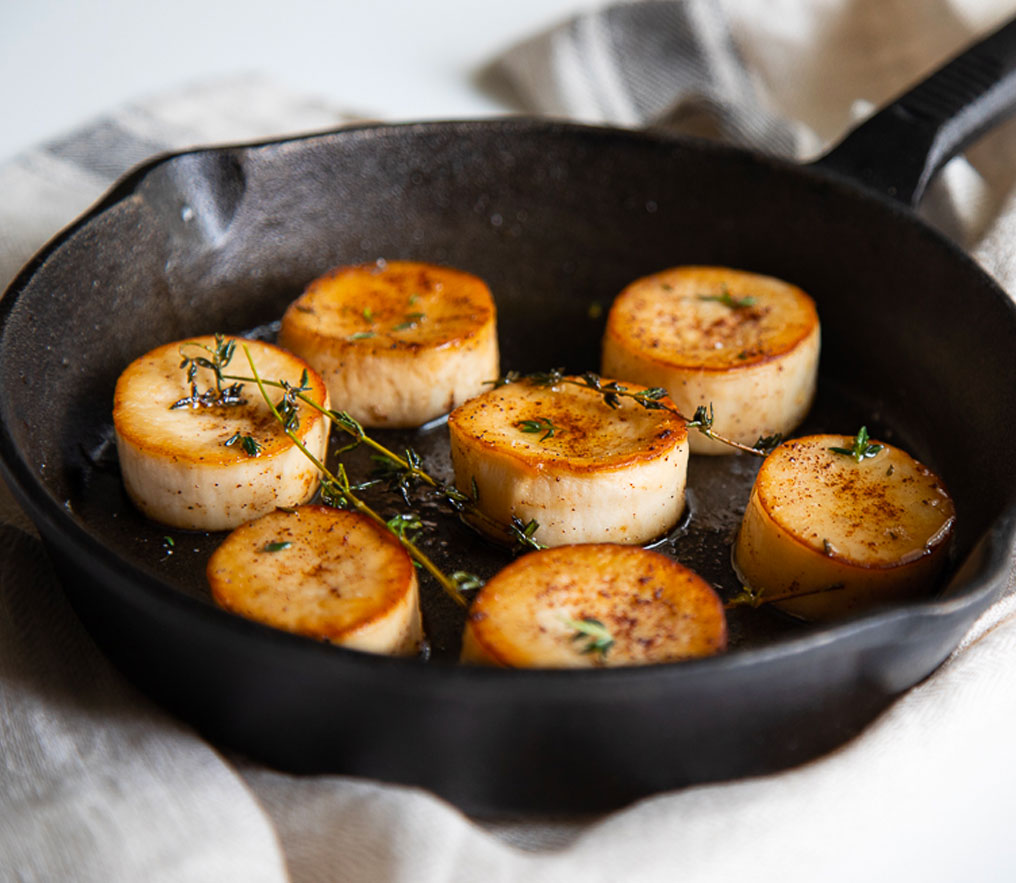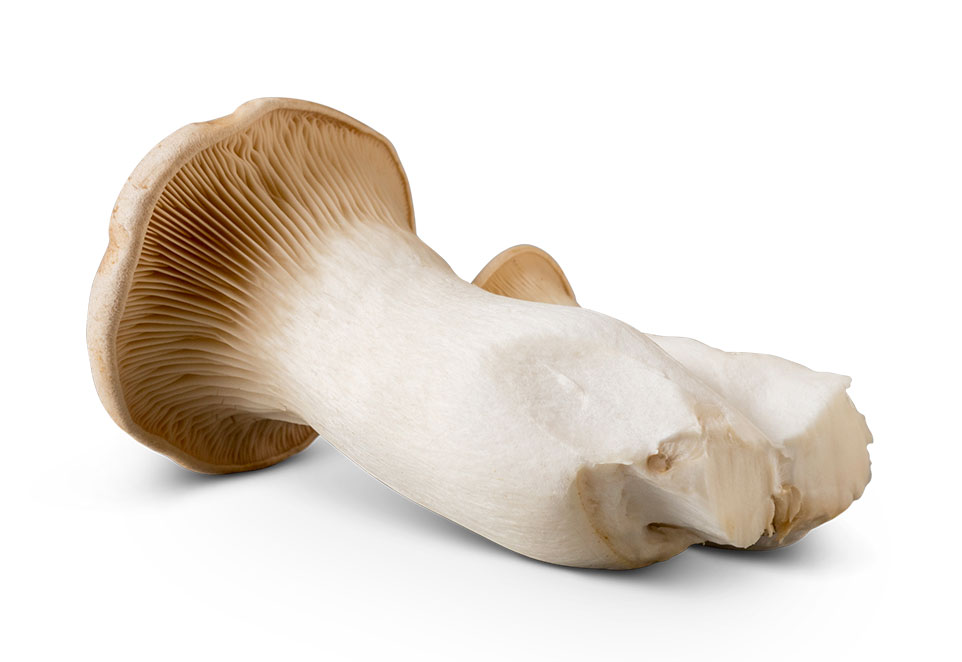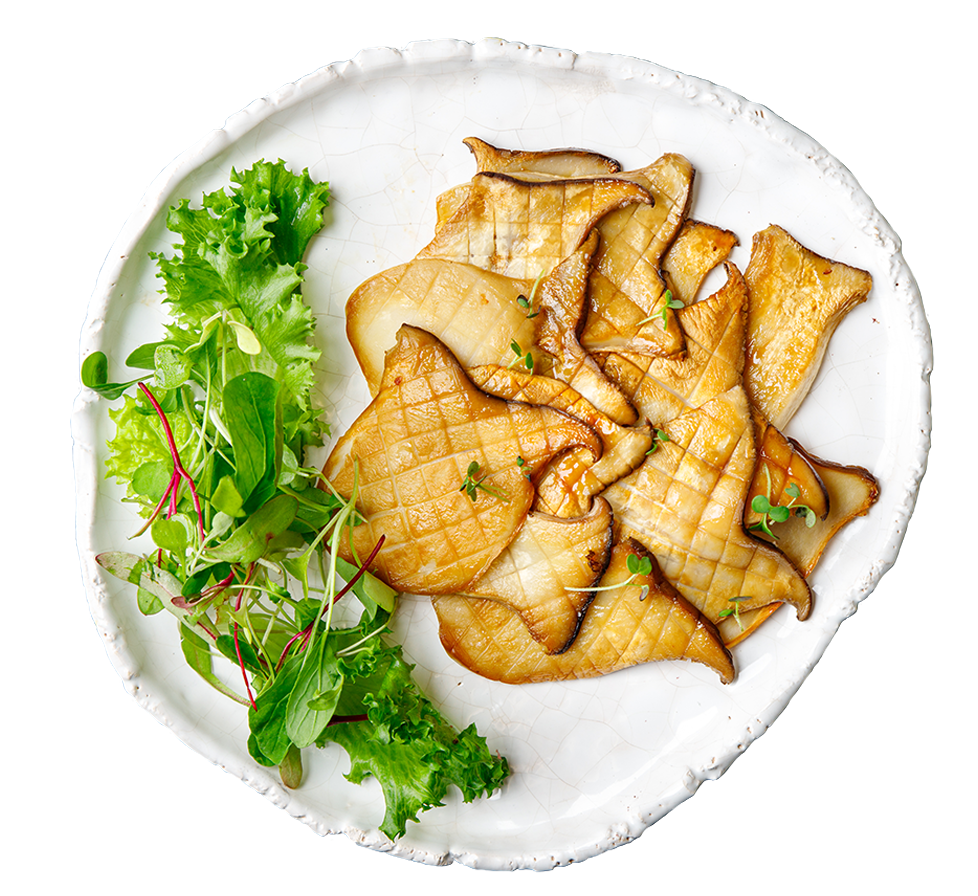
King Trumpet Mushrooms
It’s hard not to be inspired when you have this mushroom in your fridge. The king trumpet mushroom (Pleurotus eryngii) has quickly become a chef favorite due to its versatility and meat-like texture.
Known for its distinctive thick white stem and brown cap, the king trumpet mushroom varies in size from 4-7 inches long and 1-2 inches in diameter.
King trumpet mushrooms are native to parts of Europe, North Africa, the Middle East, and the Mediterranean, and are now commercially cultivated in North America. As a member of the Pleurotus family, this delicacy has accumulated a variety of names that include trumpet royale, king oyster mushroom, french horn mushroom, cardoncello, and eryngii.
This variety has always been popular in Chinese and Japanese cuisine, and in recent years, has become an on-trend ingredient among North American chefs who often use king trumpets in place of meat in pulled “pork” sandwiches, vegan “scallops” and even “ribs.”
King trumpet mushrooms can be refrigerated in their original packaging. When purchasing loose mushrooms, place them in a brown paper bag. It’s not uncommon to place the king trumpets in the main section of the refrigerator rather than the produce drawer. Simply wipe these mushrooms with a damp cloth or paper towel before cooking.




The Benefits
of King Trumpet Mushrooms
King trumpet mushrooms not only taste great, but they also deliver nutritional benefits. Just 100 g of this low-calorie flavor-booster provides niacin (35%), riboflavin (15%), and pantothenic acid (15%).
King Trumpet Mushroom Nutritional Profile
Healthy eating is made easy when king trumpet mushrooms are on the menu. They can easily be used in place of meat without sacrificing texture. One (100g) serving of king trumpet mushroom provides the following:
- 40 Calories
- 7 Grams of Carbohydrates
- 2 Grams of Protein
- 3 Gram of Dietary Fiber
- 0 Grams of Fat
- 0 Milligrams Sodium
- 1 Gram of Sugar
- 0 Milligrams Cholesterol
- Gluten-Free
One serving (2-3) of king trumpet mushrooms is a source of niacin (35%), riboflavin (15%), pantothenic acid (15%), and vitamin D (15%). They also have thiamin (6%), potassium (6%), and folate (6%).

Culinary
Applications
It’s no surprise to learn about the growing popularity of king trumpet mushrooms. Their versatility, texture and flavor have drawn interest from home cooks and world-class chefs. They work seamlessly with poultry, seafood, and legumes and have proven to hold their own in a variety of cuisines. Their chewy and meaty texture make them an excellent stand-in for meat.
Try king trumpet mushrooms in a variety of recipes, including:
- Thick sliced and wrapped in bacon
- Slow cooked and shredded for a “pulled” style sandwich
- Sliced lengthwise, scored and grilled
- Sliced into medallions, seared and served as vegan “scallops”
- Threaded onto skewers and grilled
- Marinated, roasted and served over meats
- Stir-fried in Asian-based recipes
- Cut into cubes and simmered in broth
What’s great about the king trumpet mushroom is there is no waste. The entire mushroom is edible – from its thick and fleshy stem to its short gill cap. It’s recommended that king trumpet mushrooms be consumed once cooked.

